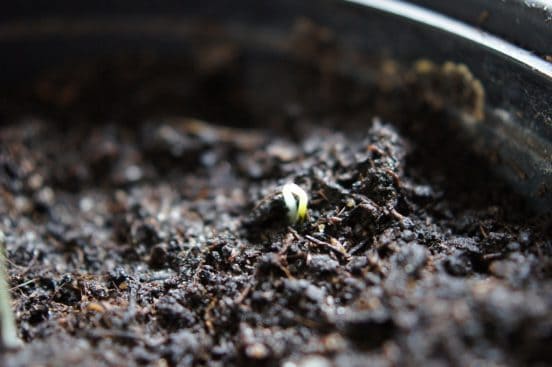It’s that time of the year again when a chilli grower gets into full gear starting seeds.
A little too early, a little too late already, one never quite knows, but it is the time to get chilli seeds into soil. Or Jiffy Pots. Or a starter mix. Or… something.

Trying to also get some other hot spice’s seeds to germinate provides a contrast that makes it very apparent what the chilli’s (other) special powers are: aside from its being effective (yeah, I mean hot), it also has a certain ease of use: Chilli seeds may easily be among the easiest plant seeds to grow.
Yes, the soil should better be warm enough, but there is little need to worry about the depth at which one plants the seeds, germination in light or in dark, let alone scarification, cold treatment, or anything like that.
Sure, some people like to worry about such things, some people grow types of capsicum that are not the most usual and that may profit from some more-special techniques, pre-soaking in chamomile tea may be good against mold anyways, yadda yadda… Most likely, it will not make too much of a difference.
 As long as the seeds are from last season or similarly not-old, and as long as they don’t come out of chilli pods that were dried in too high a heat, they are likely to germinate well.
As long as the seeds are from last season or similarly not-old, and as long as they don’t come out of chilli pods that were dried in too high a heat, they are likely to germinate well.
Especially in warmer climates, but sometimes even in temperate ones, chilli has even appeared as a volunteer plant. That is, if chilli seeds (or pods, of course) were thrown out somewhere, they sometimes germinated and produced new plants, never having been actively planted.
There is also the second special power:
Capsicum is a sub-/tropical genus of plants, used to growing seasons interrupted by only slightly lower (still above freezing) temperatures… but it grows just as well, as many or probably even most of its growers around the world know, as an annual.
This adaptability from its natural warmer habitats, where it would grow as a perennial, to colder regions where it grows (or is grown) as an annual has enabled a spread that no other hot spice was even remotely able to achieve.
Of course, in fall, there will be another time to sample the special power for which we love – or loathe – the chilli, its pungency.
Here, too, variability and adaptability have helped it, as the pungency can be much stronger than that of all the other hot spices (although that may also have been reason for its lack of popularity in high(er)-class cuisine), even as other forms of chilli lost the pungency and became popular as vegetable…

Leave a Reply
You must be logged in to post a comment.